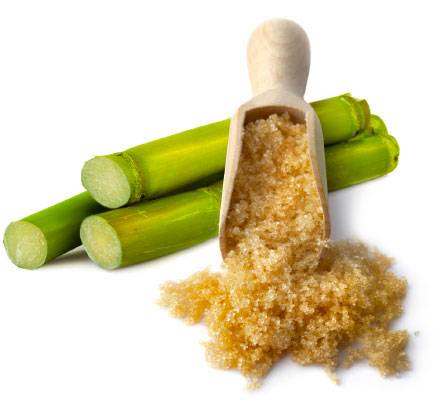Efficient Cane Sugar Processing: Making The Most Of Return and Pureness
Efficient Cane Sugar Processing: Making The Most Of Return and Pureness
Blog Article
An In-Depth Guide to the Ecological Effect and Sustainability Practices in Cane Sugar Handling
The environmental impact of cane sugar handling offers a complex selection of obstacles that warrant careful assessment. From soil destruction and extreme water use to the carbon impact connected with farming and production, the consequences of standard practices are significant. In contrast, the fostering of ingenious sustainability measures offers a pathway towards a lot more liable manufacturing methods. Understanding the interaction between these problems is crucial for stakeholders in the sector. What certain methods can be carried out to strike an equilibrium in between efficiency and ecological stewardship? The solutions depend on a closer check out both the challenges and prospective remedies.
Summary of Cane Sugar Processing
Walking stick sugar handling entails a series of methodical actions that transform sugarcane right into polished sugar. Initially, gathered sugarcane is carried to processing facilities, where it goes through cleaning to eliminate dirt and debris. Following this, the walking cane is squashed to draw out juice, which is after that cleared up by removing contaminations via home heating and the addition of lime.
The made clear juice undertakes dissipation, where water is eliminated to concentrate the sugar content. These crystals are divided from the staying syrup using centrifugation, resulting in raw sugar.
The end product is then dried and packaged for distribution. Throughout this whole procedure, keeping performance and quality assurance is vital to guarantee the sugar meets industry standards. Each action in walking cane sugar processing not only adds to the last product but additionally has effects for resource usage and waste generation, setting the stage for discussions on sustainability and environmental effects linked with sugar manufacturing.
Environmental Obstacles of Production
The production of cane sugar presents a number of considerable ecological challenges that warrant interest. One main worry is the comprehensive use of agrochemicals, consisting of plant foods and chemicals, which can lead to soil degradation, biodiversity loss, and contamination of local water sources. The drainage from sugarcane areas typically carries these chemicals into nearby communities, interrupting aquatic life and impacting the wellness of communities reliant on these water bodies.
An additional obstacle is the high power intake connected with sugarcane processing. The boiling and refining phases need substantial warmth, primarily generated by melting fossil fuels, adding to greenhouse gas discharges. Furthermore, the large acreage required for sugarcane growing can cause deforestation and environment damage, further worsening environment modification and threatening wildlife.
Moreover, the labor practices in some areas increase moral worries, as employees might encounter poor working problems and poor incomes. This situation commonly bolsters a cycle of hardship in neighborhood areas. Cane Sugar Processing. Attending to these ecological obstacles is critical for developing extra lasting techniques in cane sugar manufacturing, eventually profiting both the environment and the areas associated with this sector
Water and Land Usage Effect
Water sources and land application are vital components in the walking cane sugar industry that significantly impact the environment. The farming of sugarcane requires significant water input, with price quotes recommending that it can take in up to 2,000 liters of water per kilogram of sugar created. This intensive use water usually brings about deficiency of regional water resources, impacting not just the sugarcane vineyards yet also bordering communities and communities that count on the exact same water resources for farming and domestic use.

Moreover, land usage for sugarcane cultivation can lead to deforestation and index the conversion of all-natural environments right into monoculture ranches. This practice lessens biodiversity, this post interrupts neighborhood ecological communities, and adds to dirt deterioration. The expansion of sugarcane areas frequently trespasses on valuable farming land, developing competition for sources in between food and biofuel manufacturing.
Sustainable techniques, such as maximizing watering strategies and carrying out crop turning, are necessary to alleviate these influences. By embracing more reliable water usage and land monitoring methods, the walking cane sugar market can minimize its eco-friendly footprint, making sure an equilibrium in between agricultural productivity and ecological conservation.
Greenhouse Gas Emissions
Greenhouse gas exhausts stand for a significant environmental worry within the walking cane sugar handling market, particularly as farming techniques increase to satisfy global demand. The farming of sugarcane, a crop that grows in tropical climates, counts greatly on synthetic plant foods and pesticides, which add to nitrous oxide discharges. Additionally, land-use modifications, including deforestation for new sugarcane plantations, release co2 saved in greenery and soil.
During handling, energy usage is an additional major source of greenhouse gas discharges - Cane Sugar Processing. Several sugar mills utilize fossil fuels to power equipment and generate warm, causing substantial carbon footprints. Furthermore, the transportation of raw sugarcane and ended up items includes layers of discharges with fuel burning in lorries
The cumulative result of these exhausts intensifies climate change, posing risks not just to the setting however likewise to the lasting viability of the sector. Stakeholders must recognize the urgent demand for detailed techniques that resolve these emissions. This entails evaluating current have a peek at this site farming techniques, refining approaches, and transport systems to identify locations for enhancement and mitigation. Addressing greenhouse gas discharges is essential for cultivating an extra lasting walking stick sugar sector in a changing environment.

Lasting Practices and Innovations
Lasting techniques and technologies are significantly important in the walking cane sugar processing sector as stakeholders look for to minimize ecological effects while maintaining performance. One significant improvement is the implementation of integrated plant management, which optimizes resource usage by integrating dirt management, pest control, and crop rotation methods. This strategy enhances yield while reducing chemical inputs and preserving dirt wellness.
Moreover, the adoption of renewable resource resources, such as biomass from sugarcane deposits, has actually gotten traction - Cane Sugar Processing. By transforming waste items right into power, refining facilities can decrease their dependence on fossil gas, therefore lowering greenhouse gas emissions
Water monitoring practices have also seen renovations via the recycling and reusing of water in processing plants, dramatically reducing freshwater consumption. Innovations in modern technology, such as precision farming, make it possible for farmers to check plant wellness and source use extra successfully, ensuring lasting cultivation practices.
Furthermore, qualification programs like Fair Profession and Rainforest Partnership urge eco accountable farming techniques and advertise social equity within the supply chain. By embracing these sustainable techniques and technologies, the walking cane sugar processing sector can enhance its strength and add favorably to environmental stewardship.
Final Thought
The ecological influence of cane sugar processing presents substantial difficulties, including dirt deterioration, high water usage, and greenhouse gas exhausts, along with ethical worries connected to labor methods. Dealing with these problems through sustainable methods, such as integrated crop monitoring, eco-friendly energy adoption, and water recycling, is essential. By advertising environmentally liable and socially fair approaches in sugar manufacturing, the sector can alleviate its damaging impacts, making sure a more sustainable future for both communities and communities associated with this industry.
Cane sugar processing involves a series of methodical steps that transform sugarcane right into polished sugar. Each action in walking stick sugar handling not just adds to the final item but also has effects for resource usage and waste generation, establishing the stage for conversations on sustainability and ecological impacts connected with sugar production.
Greenhouse gas discharges stand for a considerable ecological issue within the walking cane sugar handling industry, specifically as farming techniques expand to meet global need.Lasting techniques and developments are significantly essential in the cane sugar processing sector as stakeholders look for to minimize environmental impacts while keeping productivity.The ecological effect of walking cane sugar processing presents substantial obstacles, including soil degradation, high water usage, and greenhouse gas emissions, alongside ethical concerns related to labor practices.
Report this page